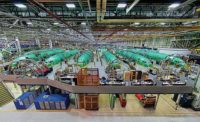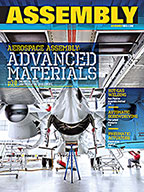At first glance, the A. Lorne Weil Outrageous Business Plan Competition might look like just another frivolous exercise by MBA students with nothing better to do. It isn't. An annual event led by the Columbia Entrepreneur's Organization at Columbia University (New York), this competition encourages students to explore creative entrepreneurial ideas that are sufficiently ambitious in scope and scale to be considered outrageous.
These ideas straddle the line between being fundable by venture capitalists and rejected as unfeasible for traditional investors. Students explore these ideas while learning firsthand what goes into the development and presentation of a solid business proposal.
Though it may sound frivolous, some of these students will be tomorrow's leaders in business and manufacturing, and the competition is a platform for testing outside-the-box business ideas before seasoned venture capitalists and entrepreneurs. When all was said and done, the judges awarded first prize, $5,000, to Cate Han '05 and Brendan Yam '05 for their business plan for Differential Dynamics, a venture to create a new infinitely variable automobile transmission. Clearly, this will represent an opportunity for assemblers when it comes to fruition.
Innovation in manufacturing and business is alive and well, and ASSEMBLY magazine's ninth annual capital equipment spending survey clearly suggests that assemblers intend to invest to turn innovation into profitable production. The results forecast that U.S. assembly plants will spend more than $2.6 billion on new equipment in 2005. You can read senior editor John Sprovieri's complete report beginning on page 36.
Cost reduction has always been the principal reason cited by assemblers for buying new equipment. During the downturn, most companies would only spend for technology, such as automation, that could cut costs quickly. Now, however, they are considering long-term benefits. For the first time since high-tech tumbled, businesses are starting to spend on technology that doesn't offer an immediate return. It is noteworthy that almost half of assemblers responding to our survey are allowed a capital recovery period of 2 years or longer on their assembly equipment investments, while less than 20 percent are restricted to one year or less.
Manufacturing continues to be the largest contributor to economic growth in the United States. Nonetheless, U.S. manufacturers face serious long-term challenges, such as out of control litigation and excessive regulation, that threaten the capability of U.S. manufacturers to compete globally.
Part of the answer, as Don Ewaldz points out on page 120, is that a business has to be flexible to be successful. Having the courage to change is not an option; it's a matter of survival. Look for ways to push the envelope, not just by investing in capital equipment but, more importantly, by using that capital equipment to make your assembly operations more productive and profitable.







